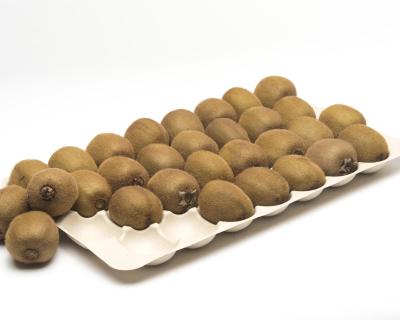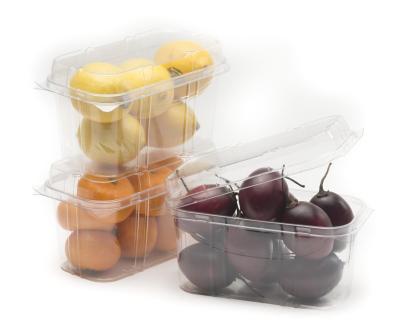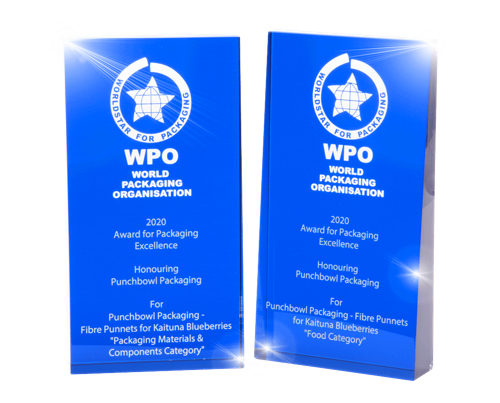Choosing the right option for a business and industry
When considering packaging options from a business perspective, there’s a lot to think about. First and foremost, what is the purpose of the packaging?. It needs to present and preserve the integrity of the contained products, which can sometimes be fragile and perishable.
Fragile, perishable or consumable products
Special consideration needs to be given to these types of products, as factors such as physical damage, temperature or cross contamination can greatly decrease the quality of a product, leading to the potential of losses across the business. For consumables, packaging must also be food safe yet robust enough to optimise preservation. The less damaged or compromised something like produce is when it reaches the end-user or retailer, the less likely it is to go to straight to landfill as waste. This of course, must be weighed up with any possible negative impacts the suitable packaging material may have on the environment.
How well does the packaging travel?
The element of protection in packaging is vital to consider for any operational and transportation processes before the end-user receives the product. This is important not just to protect the product inside, but to also maintain any branding on the packaging as it travels. Heavier and bulkier packaging also has the potential to increase the energy (and emissions) required to transport it. When considering which packaging might be best suited within the context of operations and transport, it is important to identify any risks to the packaging and where these are most likely to occur along its lifecycle. These could include:
- How the packaging holds up during the packing process – would automation of this process affect the packaging integrity negatively or positively? What about manually-operated packing?
- How the courier network handles the packaging and how many times it is handled during the packaging’s life cycle
- The temperature of the environments it travels through (origin country or region, destination, shipping containers, warehouses, courier vans, retail stores)
- Any palletising after delivery?
- Potential consumer damage prior to purchase (i.e. a customer poking a bruise into an avocado to check ripeness or dropping a product on the floor by accident could render a product no longer fit for purpose, causing it to become waste before it can be used)
How is it disposed of?
The end-of-life of packaging is one of the most important environmental factors to include when making a decision. Can the packaging be recycled and if so, where and how does this occur? With consumer products, this needs to be as straightforward and convenient as possible. Many packaging options for perishable or consumable goods are single-use. This is not ideal, so the end-of-life of the packaging needs to ensure it does not wind up in landfill or floating in the ocean. Or if it does end up in the ocean or in landfill, for instance if its not suitable for recycling due to being contaminated with food, how long will it remain in the environment before it breaks down, and will it cause harm to the environment in the meantime? Packaging developers work closely on the messaging to ensure guidance is provided to consumers to follow disposal instructions. If they need to take packaging to a certain recycling facility, disassemble multiple components of it or if the instructions are simply unclear. Kerbside recycling is ideal, provided the packaging is clean and meets any region-specific requirements. Decomposition through compost or even in a landfill does produce some methane, however it is a better choice than remaining in the environment for a very long time. There are times when packaging cannot be recycled due to contamination.
Budget friendly vs premium
Financial capacity can greatly influence the packaging a business chooses to use. How much value does any given business place on its packaging? What are they prepared to pay and is the quality of the packaging a reflection of the product? Small businesses may not want – or have the capacity – to invest in packaging research and development and may choose an option that is cheaper and readily available. This may result in a packaging option that while cheap, compromises the product integrity, does not appeal to customers or may be manufactured, with non-renewable resources. However, if there is a product available where an organisation has already done the leg work (such as Punchbowl Packaging’s bagasse punnets), then this can be a great user-ready option.
Any packaging used must also align with a company’s brand, vision and values. The balancing act between price, performance and environmental impact means there is a lot to reflect on when choosing which packaging is right for your product.
The role of packaging in lifestyle choices
At Punchbowl Packaging, we are constantly asking ourselves how we can be unique in the packaging space while meeting our customers’ expectations. Shelf life, usability, convenience, waste reduction, affordability and environmental impacts are all factors we know our customers value. Packaging needs to be easy to use and even easier to recycle or compost. We want customers to feel good about the packaging they are paying for, knowing they are supporting efforts to continually improve their options, while on a journey to using more renewable resources.
We also understand that not all customers will want the same type of packaging; some prefer a premium look and feel while others prefer something more low-key. As such, we have a range that suits a plethora of requirements, and we adapt as these change over time. Our drive towards continual customer satisfaction, combined with our ability to automate packaging means that we are able to create solutions that fulfill customer wants and needs while opening up doors - and minds - for future improvements.
Alignment is key
Like any significant change to a product or service, before transitioning to bagasse, we needed to ensure we had alignment between the needs of our business, our buyers and what the environmental impact could be (negative or positive). Our customers’ desire to support and be a part of the development of our packaging (by requesting design changes) was one of the main catalysts for us developing our bagasse products. This shared vision is what drove us to put as much effort into protecting and preserving our clients’ produce as we have into being innovative yet mindful of the potential environmental impacts of our products.
During the design process of our bagasse products, we were mindful that prices resulting from a move to different materials needed to be in line with what our customers were willing to pay. We also wanted to ensure the functionality was married with customer requirements and we liked the fact that our bagasse was from a highly renewable fibre source (from fast growing sugar cane), was a waste by-product of sugar cane mills and was food contact safe. Our design process has taken time to hone and has allowed us to get to a stage where it can be off the shelf all the way down to developing from scratch. While bagasse is a material that Punchbowl Packaging has seen many successes with, the ‘sustainable packaging’ movement has encouraged innovation with a range of materials such as cardboard, other plant-based fibres, cellulose and rPET (recycled polyethylene tetrepthalate).
Paving the road of innovation
Working in the kiwifruit industry was just the start for Punchbowl Packaging, as we now have branched out into other premium produce sectors that are requiring support. We ensure we partner with the right organisations – both here in New Zealand and globally – to integrate our expert knowledge from over 30 years’ experience into every project we work on, paving the way as a leading packaging innovator.
It is no surprise that we have won multiple awards throughout the years and are proud to have significant industry partners such as Proseal, Niverplast, Punnetmate and Intralox.
If you would like to know more or discuss your business’s sustainable packaging needs, please give us a call on +64 9 215 2692 or complete our enquiry form here.











